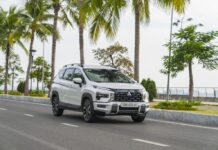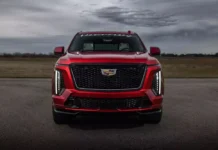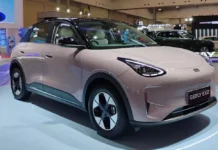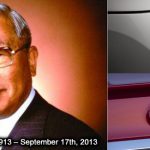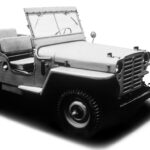Nissan, the second largest automobile manufacturer in Japan after Toyota and one of the top three heavyweights competing with the Big Three in the US, has built a reputation for quality and reliability in the automotive industry for nearly 80 years.
Nissan Motor Co., Ltd. (Japanese: Nissan Jidosha Kabushiki-gaish) is a Japanese automobile manufacturer that used to sell cars under the Datsun brand until 1983. Interestingly, the pronunciation of Nissan varies in different markets. In Japan and the US, the brand is called “KNEE-sahn,” while in the UK, it is pronounced as “NIH-ssan.”
The Datsun Era
In 1914, Kwaishinsha Motorcar Works (established 3 years earlier in Azabu-Hiroo, Tokyo) produced its first DAT car. The name of the new car was an acronym of the first letter of the company’s partners’ names (Kenjiro Den, Rokuro Aoyama, and Meitaro Takeuchi).

The company changed its name to Kwaishinsha Motorcar Co. in 1918 and once again in 1925 to DAT Motorcar Co. The following year, the Tokyo-based company merged with Jitsuyo Jidosha Co., Ltd., established in 1919, to form DAT Automobile Manufacturing Co. Ltd. in Osaka. In 1931, the first DATSON car (which means “son of DAT”) was produced. However, the final syllable was changed to “sun” because “son” means “loss” in Japanese, resulting in the name “Datsun.”
The Origin of the Name Nissan
In 1933, DAT Automobile Manufacturing Co. Ltd. changed its name to Jidosha-Seizo Co. Ltd. (“Automobile Manufacturing Co., Ltd.”) and relocated to Yokohama. In 1934, Jidosha-Seizo merged with a Japanese automobile manufacturer called Nihon Sangyo Co. Ltd. (“Japan Industries Co., Ltd.”) or “Ni_San” for short.
The company became Nissan Motor Co., Ltd on June 1, 1934, and was founded by Yoshisuke Aikawa. Nissan produced trucks, aircraft, and engines for the Japanese military. The company’s main plant was relocated to China after the land was occupied by the military forces. This plant manufactured engines for the Japanese war effort until it was confiscated by Russian and American military forces. During a two-year period from 1947 to 1948, the company was briefly known as Nissan Heavy Industries Corp.
Nissan’s Partnerships
Like Hino and Isuzu but unlike Toyota, Nissan collaborated with a European company to access engine and automotive designs. Nissan chose Austin from the UK, which later became British Motor Corporation (BMC). Nissan began producing Austin 7s in 1930 and later produced various models inspired by Austin, such as the Datsun 1000 based on the original Austin A50. These designs were protected by a licensing agreement between the two companies from 1952 to 1960.
Nissan started producing Austin 7s in 1930
After introducing its own models in the 1950s, Nissan continued to develop its engine designs. In 1967, the company introduced the advanced overhead camshaft (OHC) Nissan L engine, similar to Mercedes-Benz’s OHC designs. This engine was equipped in the new Datsun 510, which helped Nissan gain a reputation in the global sedan market. Then, in 1970, Nissan introduced the 240Z sports car, a 6-cylinder engine developed from the L series engine. The 240Z created an immediate sensation and elevated Nissan’s status in the international automobile market.
In 1966, Nissan merged with Prince Motor Company, which produced its own lineup of luxury cards, including the Skyline and Gloria. The Prince name was eventually dropped, and subsequent Skyline and Gloria models carried the Nissan name.
Overcoming Challenges in Crisis
During the fuel crisis, Nissan became one of the largest car exporters in the world and established new factories in Mexico and Australia.
Nissan established assembly lines in the US in the early 1980s with a plant in Smyrna, Tennessee. Initially, this manufacturing facility only produced trucks, but it was later expanded to produce various other models. Subsequently, the company built an engine manufacturing plant in Decherd, Tennessee, and most recently, a second assembly plant in Canton, Mississippi.
To minimize export duties and shipping costs to the European market, Nissan planned to establish a plant within the European border. After careful consideration, it chose Sunderland in the UK due to the presence of a highly skilled labor force and proximity to major ports. The plant was completed in 1986, becoming a branch of Nissan’s UK automobile manufacturing. Since then, it has consistently achieved prestigious titles, including the most productive plant in Europe. Financial difficulties (amounting to billions of dollars) in Australia at the end of the 1980s led Nissan to cease production there.
Under the “Nissan Revival Plan” led by Chairman Carlos Ghosn, the company experienced a remarkable turnaround that top economists considered one of the most impressive rebounds in history, bringing Nissan record-breaking profits and a new lease of life to both the Nissan and Infiniti brands. However, Infiniti’s sales remained lackluster.
In 2001, the company introduced the Nissan 180, capitalizing on the success of the NRP. Ghosn became famous in Japan for his corporate restructuring amidst a weakening Japanese economy. Ghosn and Nissan’s recovery were depicted in comic strips and popular Japanese culture. His achievements in reviving Nissan were honored by Emperor Akihito of Japan, who awarded him the Blue Ribbon Medal in 2004. Nissan also manufactures vehicles at a plant near Pretoria, South Africa.
Nissan’s Partners
In 2002, Toyota and Nissan agreed to collaborate on hybrid technology, and in 2004, Nissan introduced its first Altima Hybrid model.
Nissan began developing fuel cell vehicles (hydrogen-powered cars) in 1996 and released a limited number of FCV X-Trail models for lease in Japan in the 2003 fiscal year. On May 17, 2006, the company unveiled the Atlas 20 Hybrid truck in Japan.
On June 30, 2006, General Motors held an emergency board meeting to discuss shareholder Kirk Kerkorian’s plan to establish an alliance between GM and Renault-Nissan. CEO Rick Wagoner thoroughly reviewed the plan. However, on October 4, 2006, GM and Nissan terminated the negotiations due to disagreements related to compensation for GM from Nissan.
Th? Ð?t (Theo PL&XH)
Nissan’s 4WD Vehicles – 65 Years of Historic Journey
After a challenging journey full of obstacles, Nissan has now established a prestigious legacy in the field of 4×4 drivetrains. Through years of research, Nissan has developed cutting-edge technical secrets and world-class technologies, propelling the brand from its early Jeep-inspired models in the 1950s to the bold and powerful vehicles we see today. Let’s take a moment to review Nissan’s renowned legacy in the SUV segment and explore the history of iconic representatives such as the Patrol, Murano, Pathfinder, Qashqai, X-Trail, and Juke through the following information.
Nissan SUV – A 65-Year Legacy Journey from Japan
Having traveled a 65-year journey of inheritance and development, the renowned legacy in the 4WD field has played a significant role in shaping Nissan’s SUV lineup. Starting from the Jeep-inspired first-generation Patrol in the 1950s to the contemporary models like Murano, Juke, and X-trail, Nissan’s heritage in the SUV segment has evolved remarkably. Let’s take a closer look at Nissan’s journey in the SUV domain and discover some fascinating insights below.




